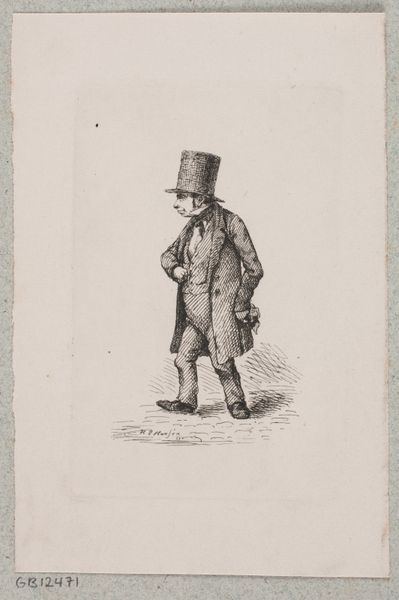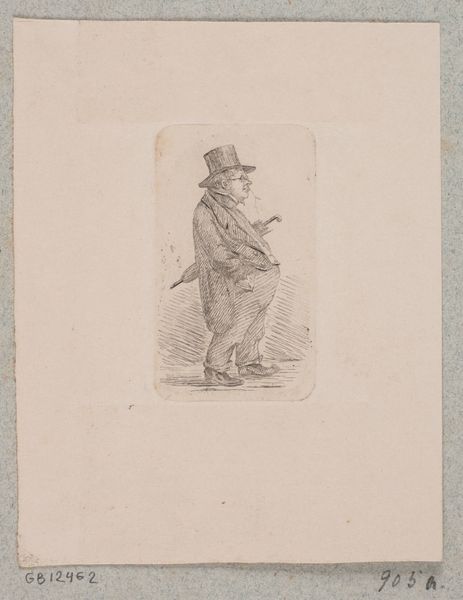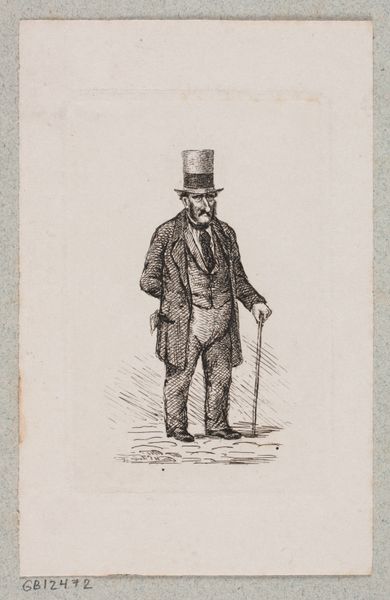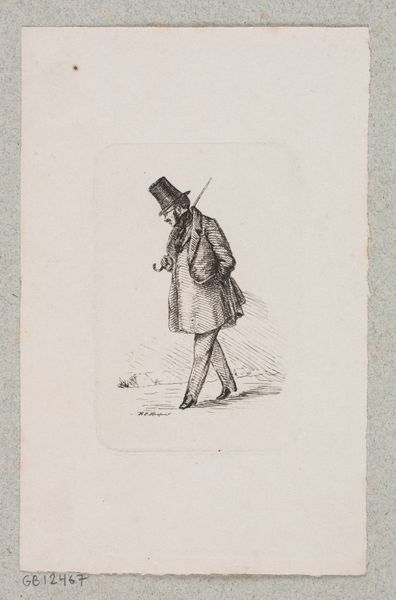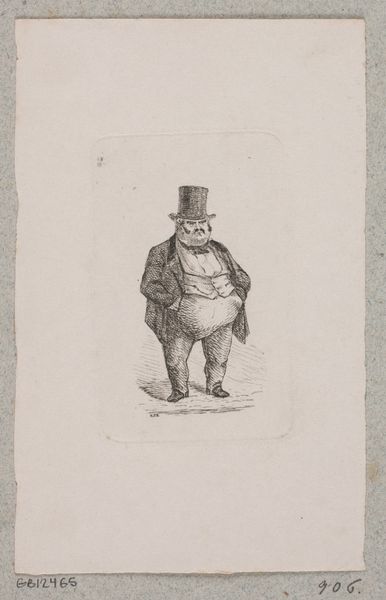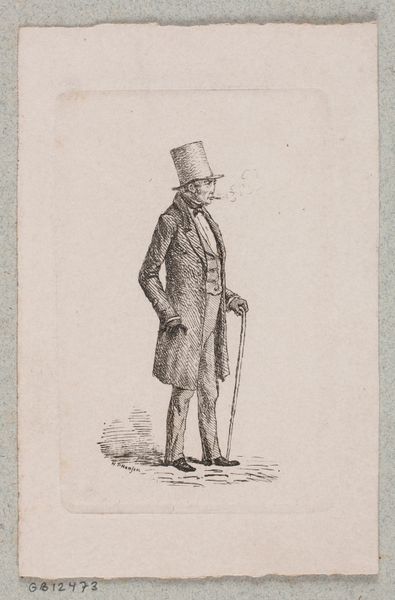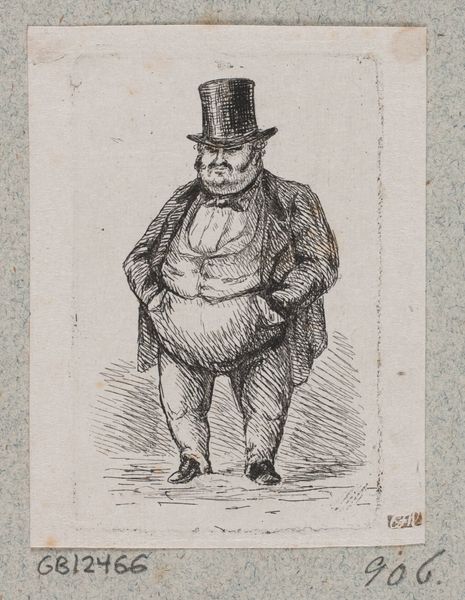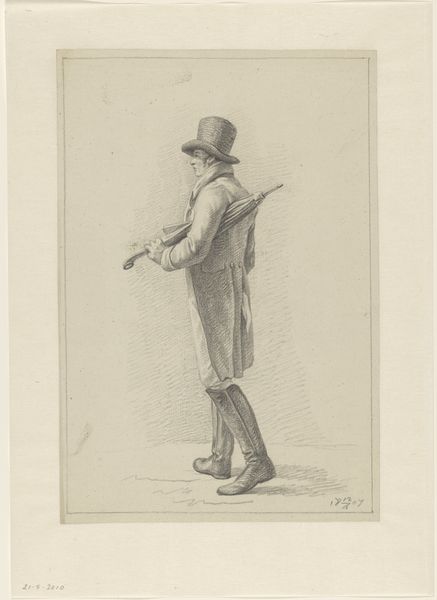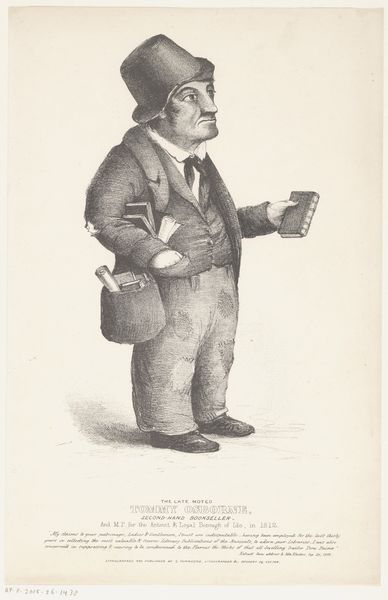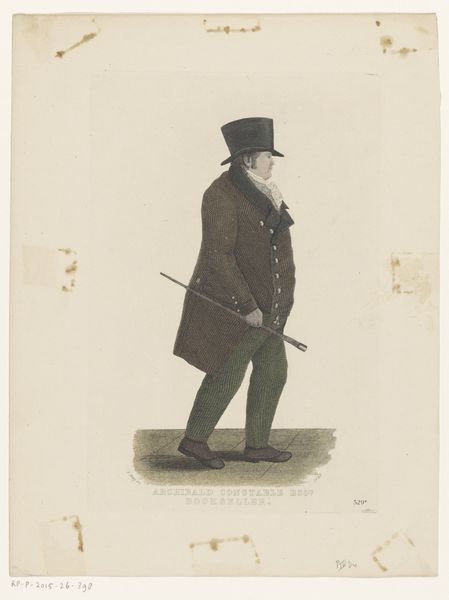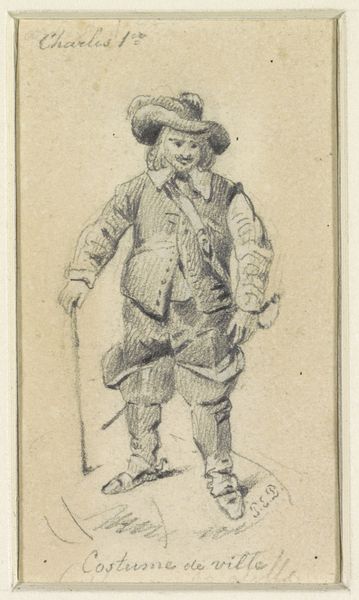
drawing, print, engraving
#
portrait
#
drawing
# print
#
figuration
#
academic-art
#
engraving
#
realism
Dimensions: 59 mm (height) x 33 mm (width) (plademaal)
Curator: At first glance, the drawing gives me a somber mood; I find the composition and subtle details quite striking. Editor: Indeed. What we have here is a piece titled "Prof. Meisling," attributed to H.P. Hansen, dating somewhere between 1829 and 1898. It is currently held at the SMK, Statens Museum for Kunst. It's a fine example of an engraving printed on what appears to be drawing paper. The labor involved is apparent, isn't it? Curator: Absolutely. You see this figure, clutching an umbrella and sporting a twig in his mouth, positioned so stiffly in a drawing. Considering the era, it prompts reflection on societal expectations surrounding male representation and the rigid constraints they placed upon self-expression. This is particularly potent if the subject was a public figure of the time. Editor: The rendering reminds me of the detailed work put into banknotes—all those fine lines. Look at the cross-hatching employed to define his coat. The means of production and availability for the general public play an important role in assigning a historical value to this print. I imagine countless copies circulating after the initial plate was created, each one imbued with its own aura through material transformation and dissemination. Curator: I wonder how Hansen perceived Prof. Meisling. Was this commissioned, a piece meant to glorify him? Or a satire, mocking the bourgeoisie? The almost comical rendering invites critique of class structures during a period defined by emergent capitalism. The attire, the stick—symbols ripe for dissecting power and privilege. Editor: Regardless of Hansen’s intentions, there’s an inherent truth exposed within its making: the labor of the artist translating social hierarchies into tactile lines upon paper. To replicate a recognizable human figure and convey ideas via an engraver's tools is an incredible exercise in itself, showing not only material handling but technical acuity, too! Curator: Precisely, examining through the lens of material conditions brings us back full circle—linking representation and production under a larger social context. It highlights our cultural understanding of social standing reflected through, or constructed by, an artistic piece like this one. Editor: Well said! Analyzing production unveils more stories than purely iconographical analysis. Food for thought.
Comments
No comments
Be the first to comment and join the conversation on the ultimate creative platform.
